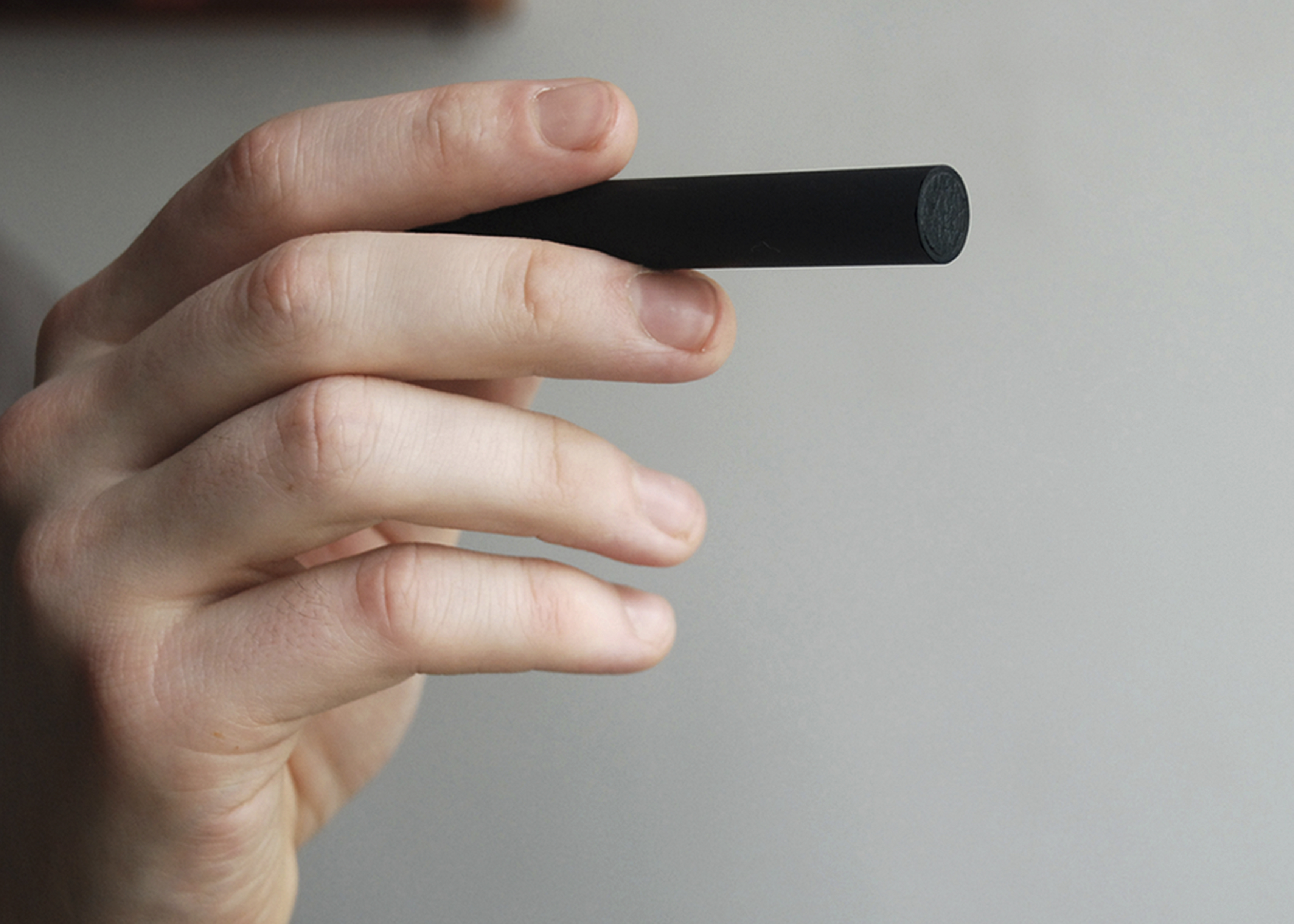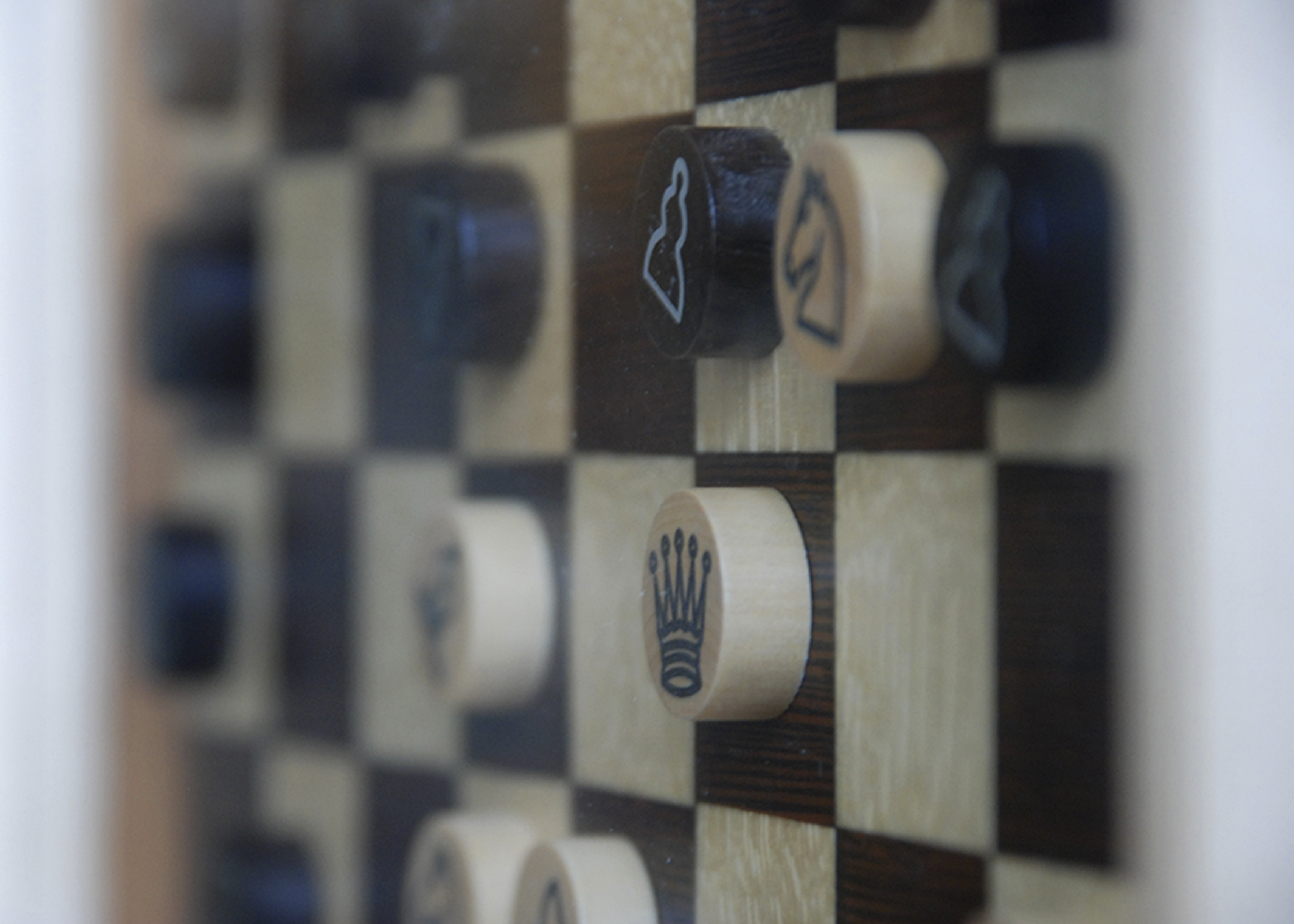Magnet Chess, 2008
25.5 x 31 x 4 cm,
wenge veneer, bleached maple veneer, larch veneer, ebony, rosewood, boxwood, maple, iron plate, glass, leather, aluminum filler with black pigment, amalgam, magnets
wenge veneer, bleached maple veneer, larch veneer, ebony, rosewood, boxwood, maple, iron plate, glass, leather, aluminum filler with black pigment, amalgam, magnets
The magnetic pull between the magnetic wand, the game pieces and the
chessboard are adjusted to each other in such a way that the game pieces are
pulled up to the glass plate with the help of the strong magnetic wand and can
consequently be moved. When the magnetic wand is removed from the glass plate,
the game pieces are pulled by the chessboard again.
Originally, this magnetic chess would have been intended as a design object for the public space, however, it turned out that the idea is not very practical. Consequently, it became more important to me to emphasize the artistic aspect of this magnetic chess. This new approach also allowed for an extravagant manufacturing process. Such as that the individual chess symbols were engraved into the pieces with a copy milling machine and then filled with amalgam or black-colored aluminum filler.
The way this magnetic chess must be used gives essence of a quote by Marcel Duchamp, “...on the surface a game of chess
Originally, this magnetic chess would have been intended as a design object for the public space, however, it turned out that the idea is not very practical. Consequently, it became more important to me to emphasize the artistic aspect of this magnetic chess. This new approach also allowed for an extravagant manufacturing process. Such as that the individual chess symbols were engraved into the pieces with a copy milling machine and then filled with amalgam or black-colored aluminum filler.
The way this magnetic chess must be used gives essence of a quote by Marcel Duchamp, “...on the surface a game of chess
strongly resembles a pen drawing,
with the difference, however, that the chess player draws with already existing
black and white shapes instead of inventing these shapes like the artist”
[Marcel Duchamp, quoted in: Ernst Strouhal, Duchamp's Game.- Vienna 1994, p.9]
.
This idea that playing chess can be like a drawing with chess pieces is
illustrated in this magnetic chess with the (magic) wand for moving the pieces
because it resembles a pencil. Additionally, the free space around the
chessboard pattern, which serves to place the captured pieces, simultaneously
corresponds to a passe-partout.
Furthermore, when the pieces are pulled to the glass plate with the help of the magnetic wand, a short click can be heard, which is similar to the click of a computer mouse. The magnetic chess can therefore also be regarded as an analog touch screen.
Many thanks to Rudolf Wenzl and Jakob Scheid for their helpful advice.
Furthermore, when the pieces are pulled to the glass plate with the help of the magnetic wand, a short click can be heard, which is similar to the click of a computer mouse. The magnetic chess can therefore also be regarded as an analog touch screen.
Many thanks to Rudolf Wenzl and Jakob Scheid for their helpful advice.


photo: Paul-Reza Klein

photo: Paul-Reza Klein
© 2025 Matthias Kendler